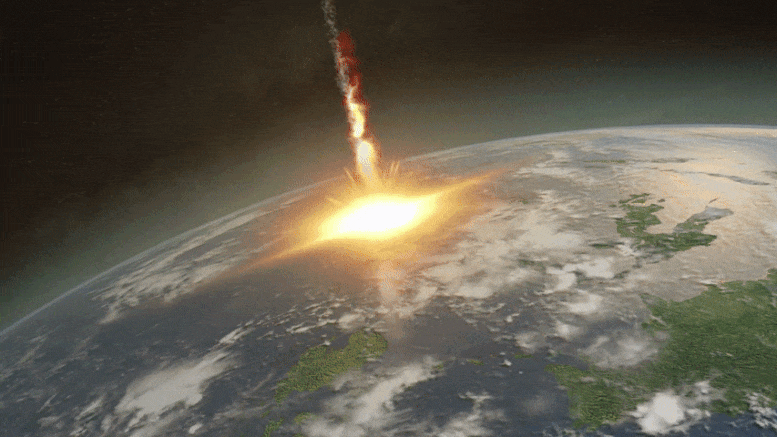

People look over an outcropping of a copper and nickel deposits 2750 feet below the surface at the Podolsky Mine, owned by the FNX Mining Company Inc., in the Sudbury Basin, in Sudbury, Ontario, Canada, June 10, 2008. Similar to the meteor that killed off the dinosaurs, scientists theorize that the Manicouagan impact site and others of the late Triassic period may have triggered a mass extinction event that wiped out 60 percent of species at the time. (The rock took as long as 5,000 years to fully cool.) Scientists believe the fireball created by the impact may have expanded as far as present-day New York City, almost 800 miles away, and debris from the impact has been identified in the United Kingdom.

Roughly 212 million years ago, a meteor measuring more than three miles in diameter smashed into the earth, liquified the crust as deep as 5.5 miles below the surface. That’s because the Manicouagan Crater is not only very big, but its outer ring is filled with water and serves as a hydroelectric reservoir.Ī crater this big required an epic impact event. Known as “The Eye of Quebec,” the Manicouagan Crater is the fifth largest impact crater in the world and the only one that’s clearly visible from space. The crash left a gouge in the earth 12 miles wide and four miles deep, but the sandy walls of the crater collapsed and eroded over time, resulting in today’s shallow 25-mile-wide crater buried beneath millions of years of sediment.ĭate of Impact: About 212 million years ago The violent impact triggered a giant tsunami and rained molten debris for miles. The consensus is that roughly 35 million years ago, a 1.3-mile meteor or asteroid composed of either rock or ice traveling 144,000 m.p.h. It was discovered by accident during an offshore drilling project and has fascinated scientists ever since.

The crater took so long to find because it’s buried under 1,000 feet of rock beneath the ocean floor of Chesapeake Bay. Only discovered in 1990, the Chesapeake Bay Crater now ranks as the largest in the United States. Location: Atlantic Ocean near Cape Charles, Virginia, USA Planet Observer/Universal Images Group/Getty Images Satellite image of the Chesapeake Bay impact structure in Virginia.


 0 kommentar(er)
0 kommentar(er)
